
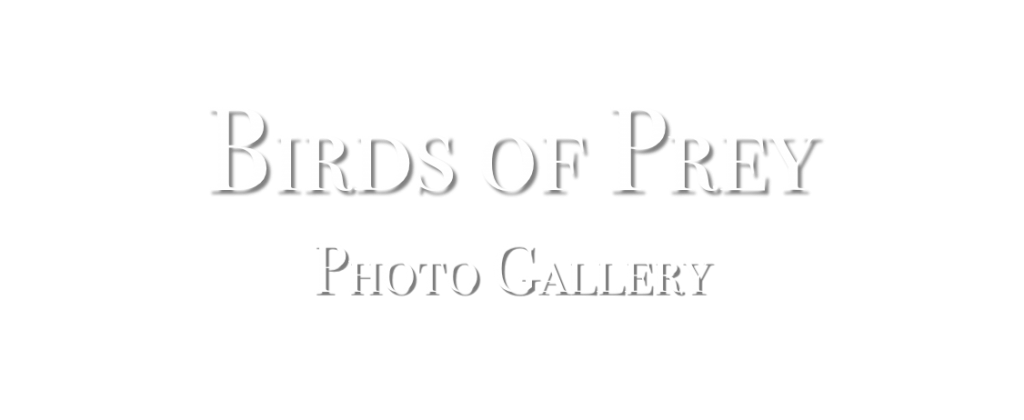
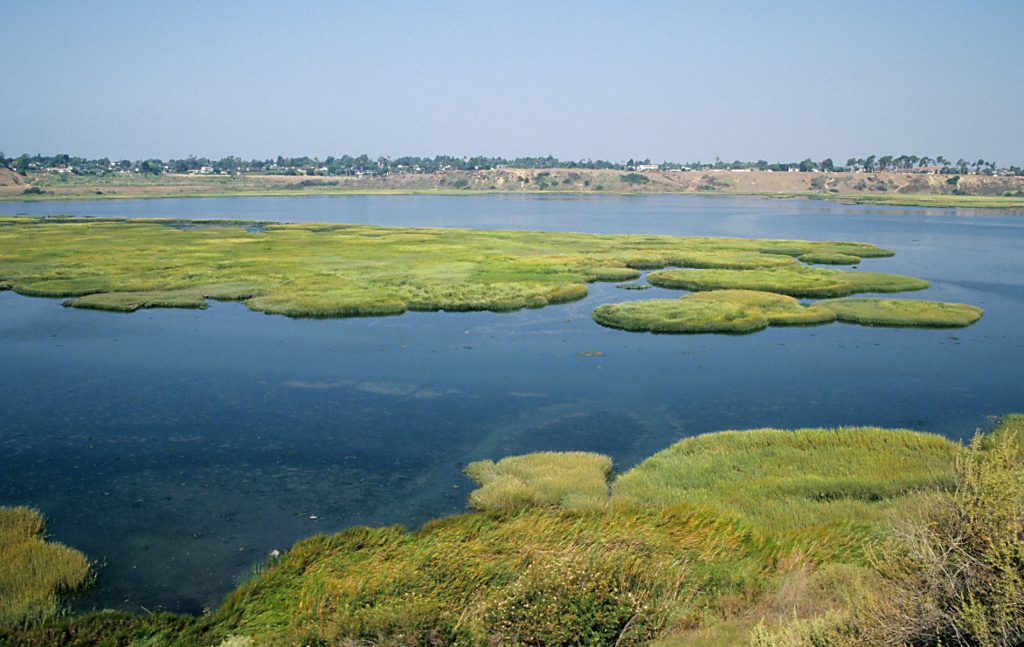
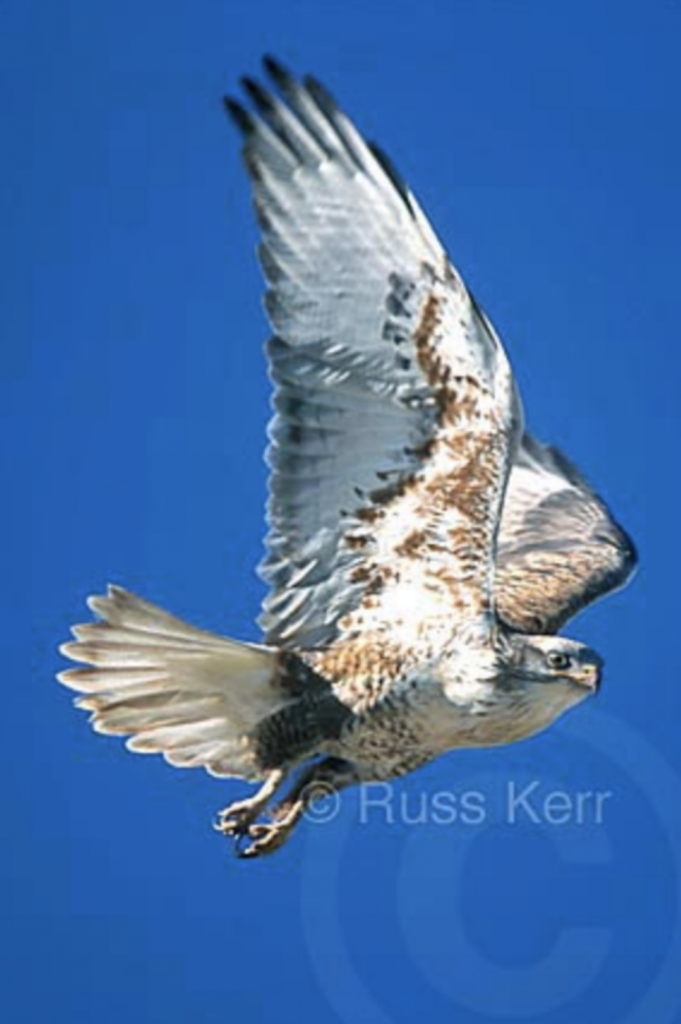
This light-morph adult Ferruginous Hawk reaches high to start a powerful downstroke as it lifts off in search of its next meal. The Ferruginous Hawk is our largest buteo, and soars over arid habitats in the West. Flying overhead, the adult’s rufous leg feathers form a dark “V” against the white belly near the tail.
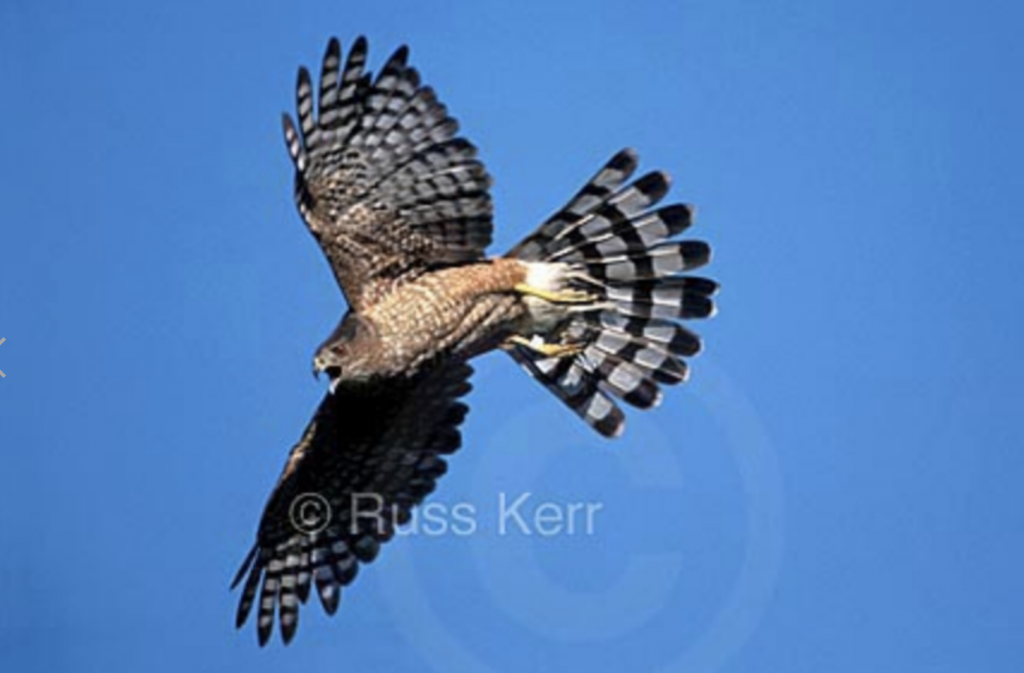
This flying photo of a beautiful adult Cooper’s Hawk displays the characteristics of an Accipiter – short wings and long tail. These characteristics give it the ability to maneuver quickly in tight spaces, as the Cooper’s Hawk typically chases birds for its prey through trees and bushes.
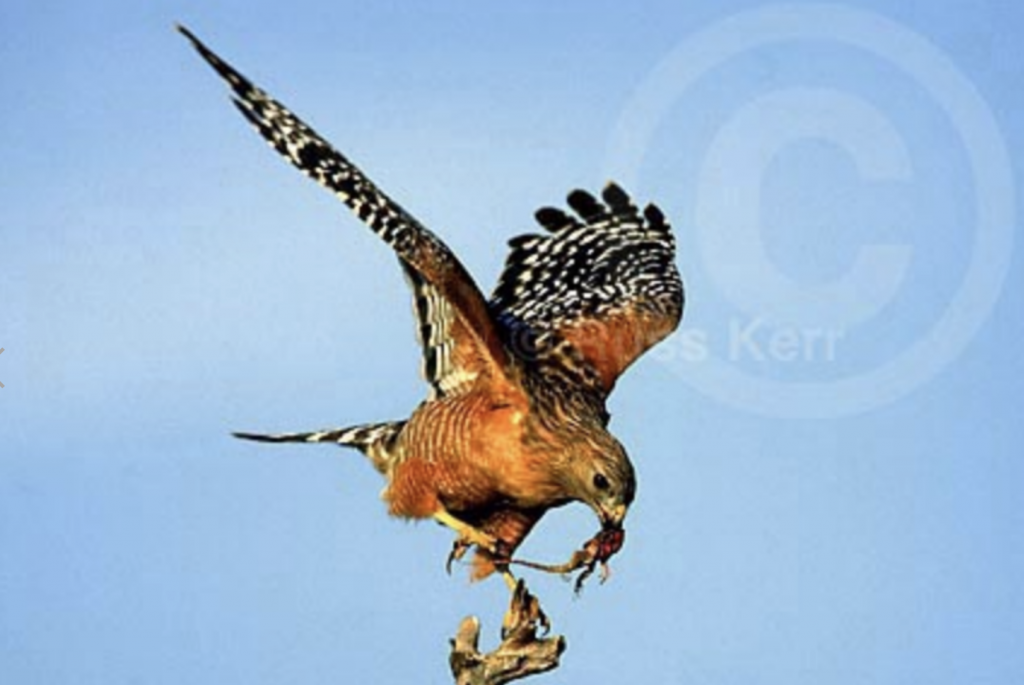
In the western United States, like this photo, the colors of the Red-shouldered Hawk are more rich and vivid than in the east. Lizards and rodents are some of the Red-shouldered Hawk’s favorite prey. This Red-shouldered Hawk photo has been well published, including the cover of a book and magazine.

The photo of this adult light-morph Red-tailed Hawk shows it flying directly overhead as it is calling, with the sun back-lighting its beautiful tail feathers. The magnificent design and layering of all the underside feathers can easily be seen in a print of this flying Red-tailed Hawk photograph.

This adult Bald Eagle flies gracefully with wings up, displaying its beautiful feathering. It takes 5 years before the Bald Eagle obtains its white head and tail. This patriotic picture consists of one flying Bald Eagle photo (with the sky cut out) superimposed on another photo of the American flag.
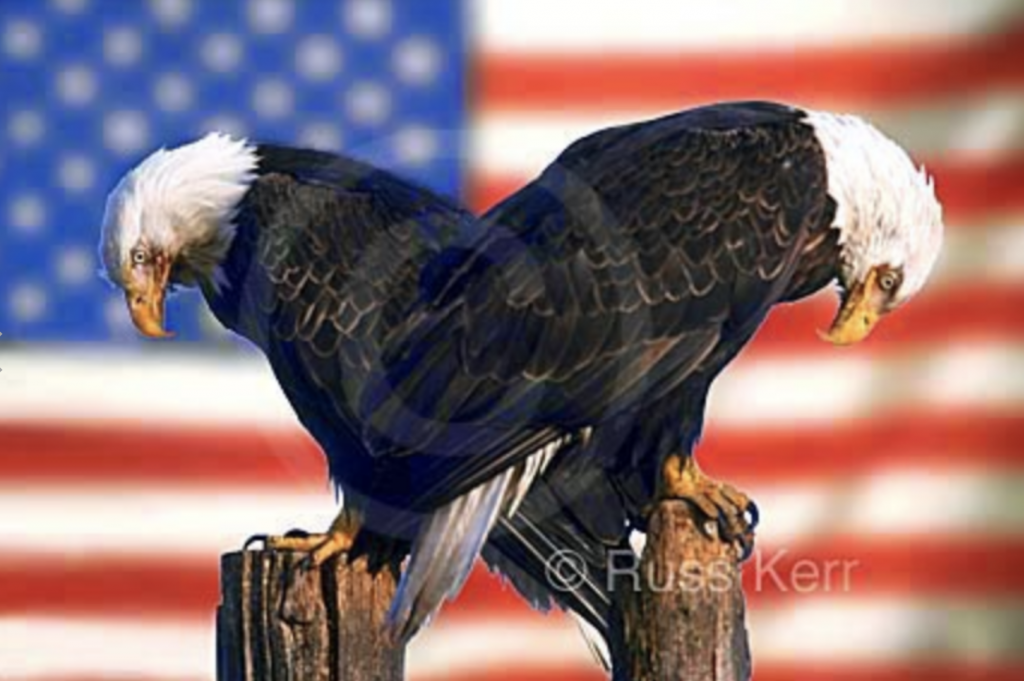
This patriotic photo could be titled “Pray For Peace”, as two magnificent Bald Eagles are framed by a background of our national flag. This consists of one unaltered photo of two perched Bald Eagles (with the sky cut out) superimposed on another photo of the American flag.
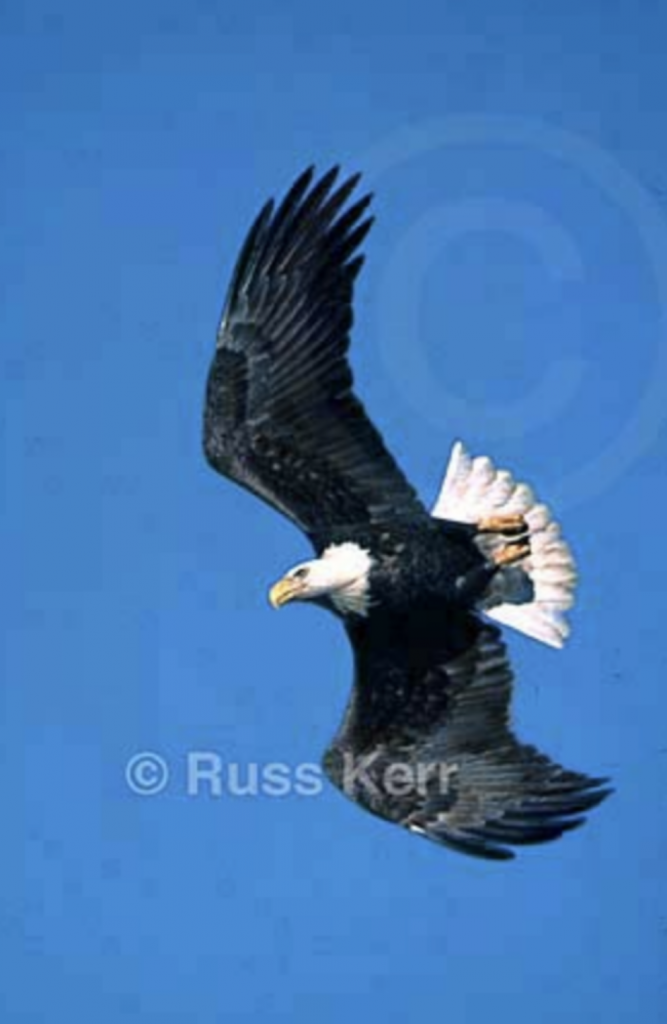
This diving Bald Eagle locks onto its target as it sees a fish in the water, and quickly banks to drop altitude and change direction. Its eyes will never leave the fish as it constantly adjusts the position of its body, flight feathers and tail to align itself for a strike. The low sun angle in this flying photo beautifully lights up all of the feathering on this Bald Eagle. This diving image graced the cover of the fall 2001 Hawk Mountain News.
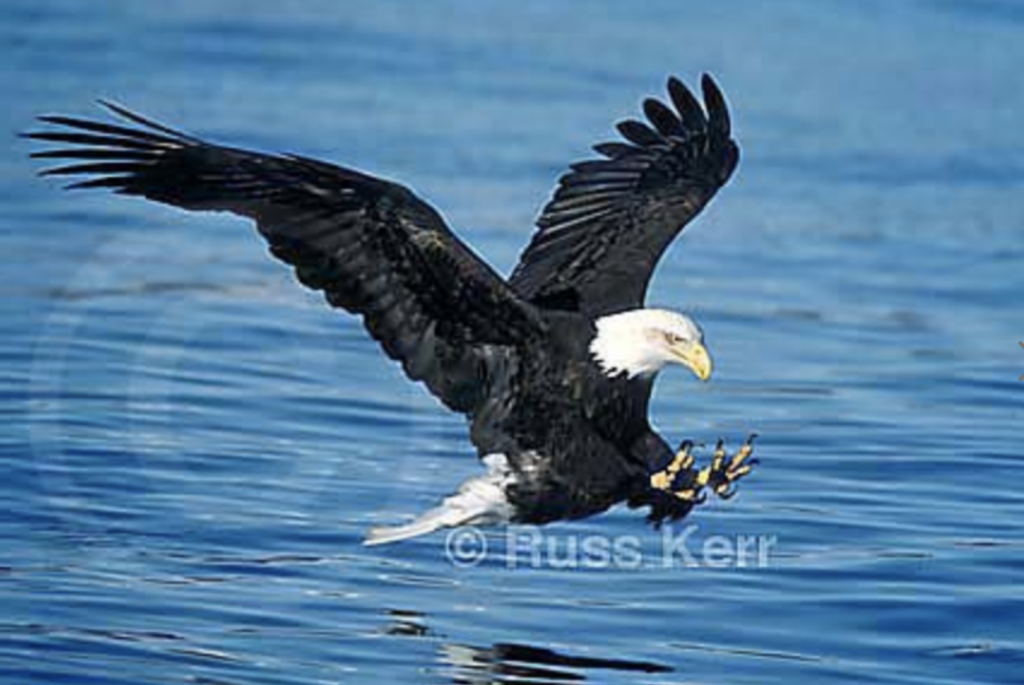
This flying Bald Eagle photo shows an adult in total concentration as it swoops in with sharp talons to catch a fish in the water. The keen eyesight, sharp hooked bill for tearing its prey, and strong talons for holding prey are the three characteristics that define a bird of prey, such as the Bald Eagle.
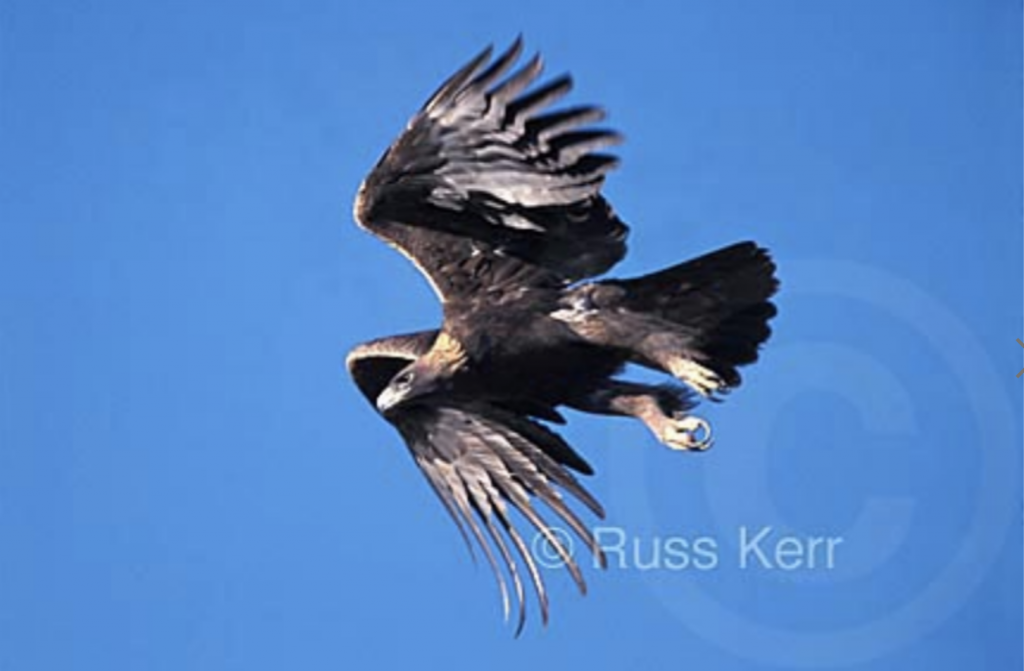
The large and powerful talons used for grasping and holding its prey can easily be seen in this flying photograph, as this Golden Eagle focuses on its next prey. Rabbits are one of the favorite meals of a Golden Eagle.
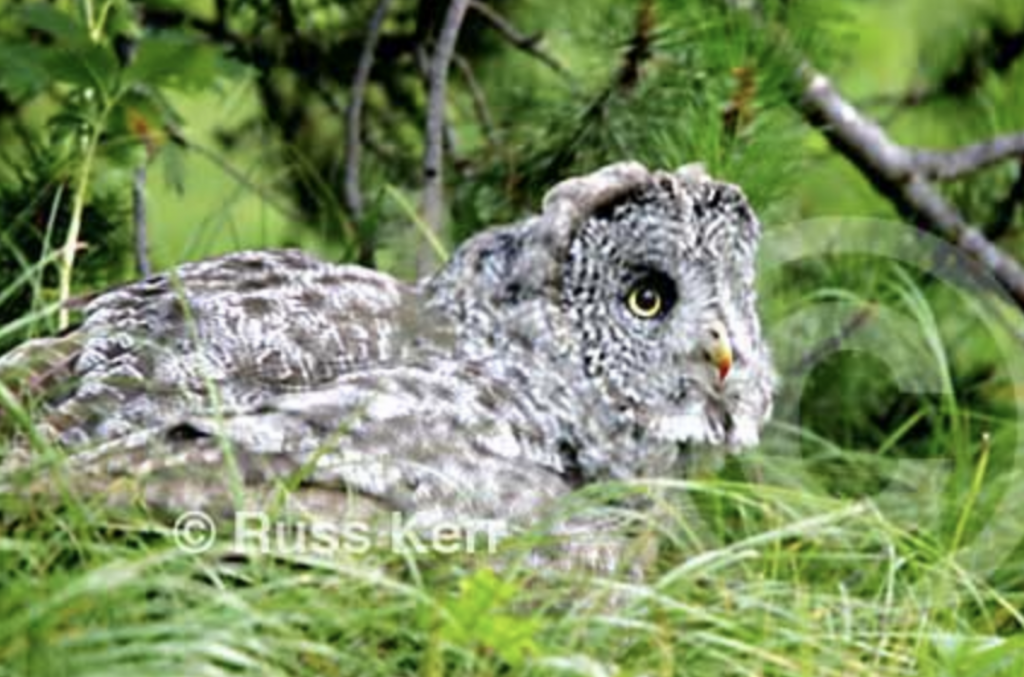
This magnificent Great Gray Owl just floated down from a branch to the forest floor without a sound, quickly striking a rodent, giving a quick bite to the neck, and is seen mantling this prey with its blood-tipped beak. This Great Gray Owl then flew away a few seconds later.
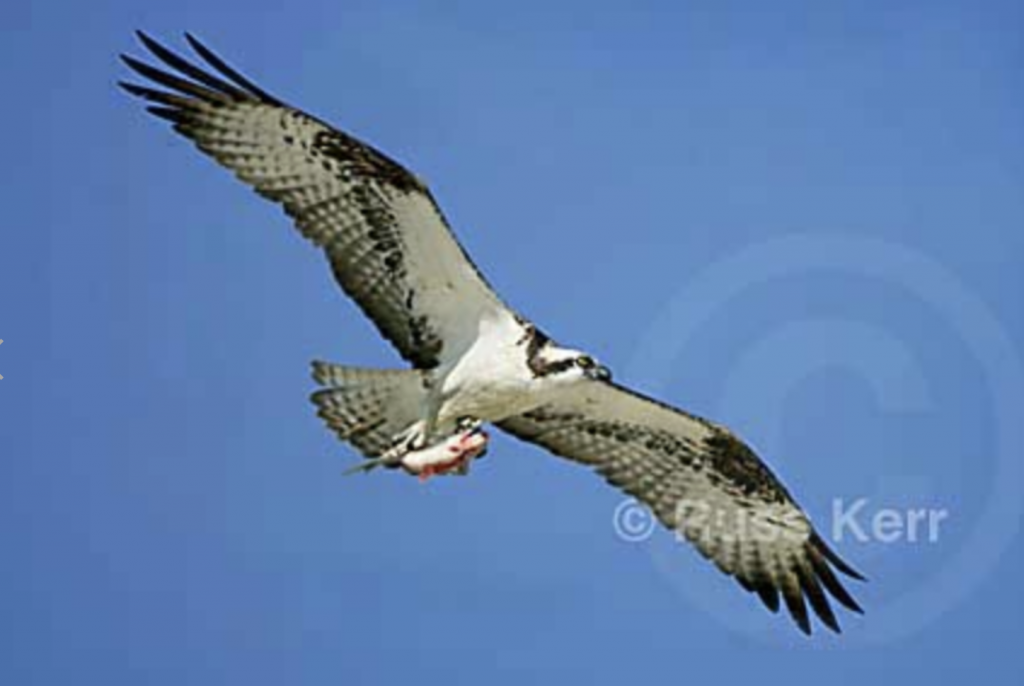
This male Osprey is flying a Striped Mullet back to the nest to feed the female and their 2 chicks, after diving talons-first into the water for this catch. He will usually land near the nest and eat the head first before delivering the rest of the fish into the nest.
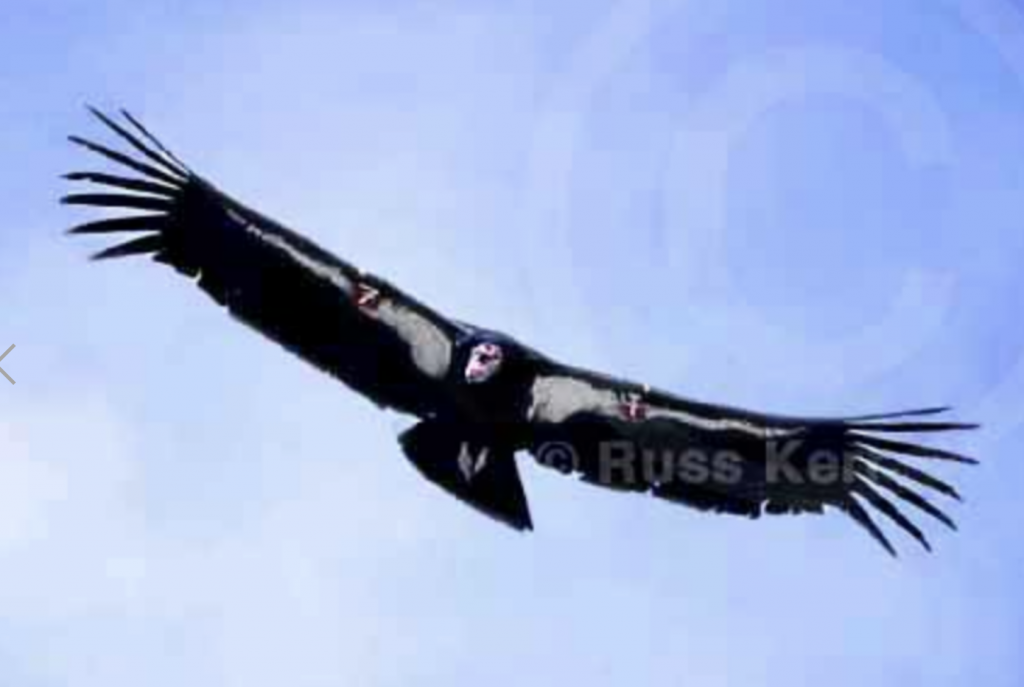
These awesome birds with a huge wingspread of 9+ feet are making their comeback into the wild. This #R7 male California Condor was hatched in captivity April 29, 1994 and released into the wild on August 29, 1995. He fathered the first surviving wild chick which hatched in April, 2004, and fathered another chick in 2009 which has also sucessfully fledged. Russ took the picture of this California Condor flying in April, 2000.

The male American Kestrel in this photo shows off his beautiful feathering as he flares all of them out as a brake for landing on this perch. The marvelous design and beauty of all the multitude of layered feathers, perfectly placed and arranged, is easy to see.
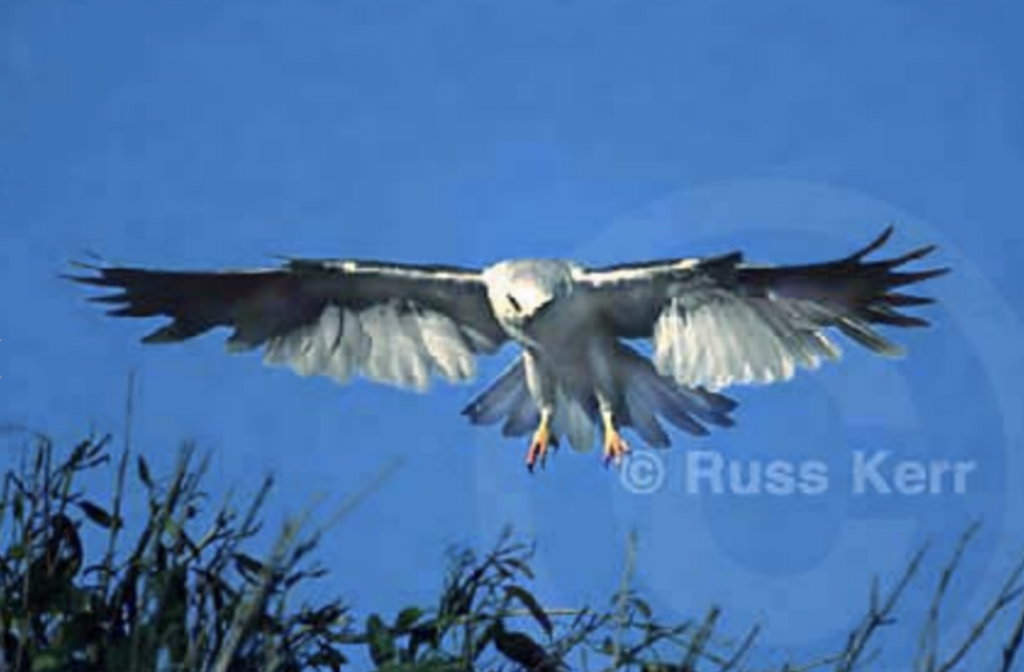
This White-tailed Kite photo shows God’s wonderful design for landing – wings straight, wing tips and tail spread, alula feathers up, secondaries curved downward, legs & talons down…all to increase lift at slow speeds and increase drag for a soft landing. Compare it to the photo of a Northern Gas Hawk next to this White-tailed Kite in the gallery.

This shows man’s design for landing – nose up, wings out, flaps down and extended, landing gear down. Compare this to the White-tailed Kite (above) landing. They make an interesting pair of photos.
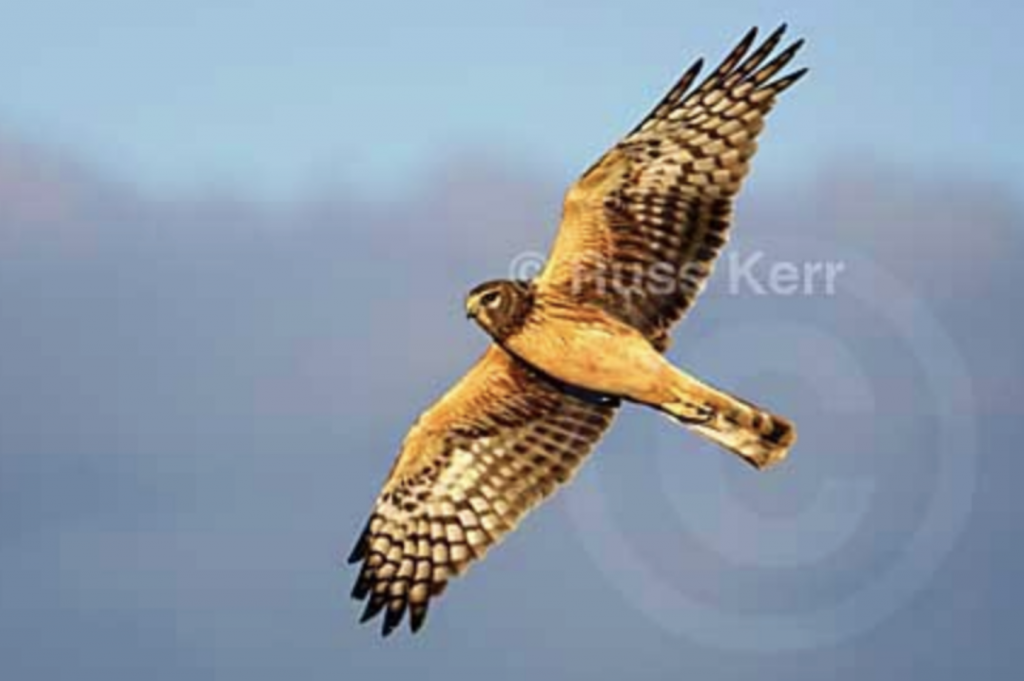
The rich colors in this juvenile Northern Harrier photo show off while banking in flight. The facial disc of this hawk can also be seen, similar to an owl’s, and enhances the Northern Harrier’s ability to locate prey by sound. Northern Harriers are usually seen flying low and slow over their hunting territory with wings held in a slight V shape.
Russ’ celebrated collection of photographs have been cherished by bird enthusiasts, naturalists, conservationists, educators and photo specialists all over the world.
For decades, Russ’s images have have been licensed, framed and printed and displayed in high profile places for many to enjoy.
If you would like to see more images of a particular subject, please contact Russ HERE..
Also, if you would like to own a digital, high resolution copy for your web site, textbook, or to be printed and framed, send a message to Russ HERE. Be sure to include the photo ID you’ll find int his watermarked gallery.